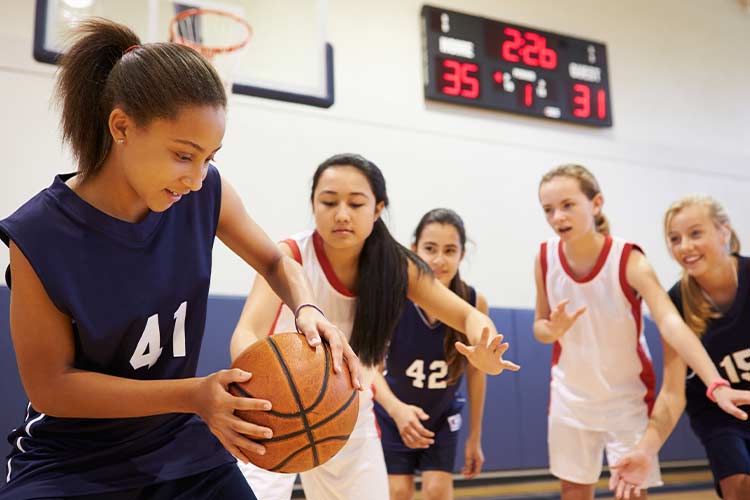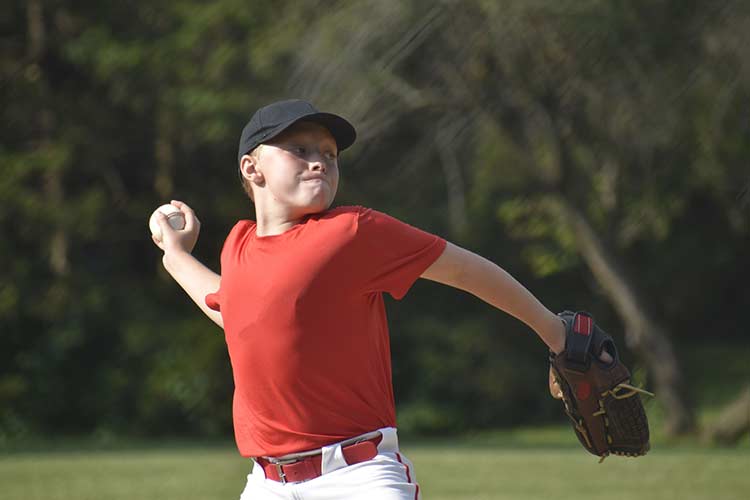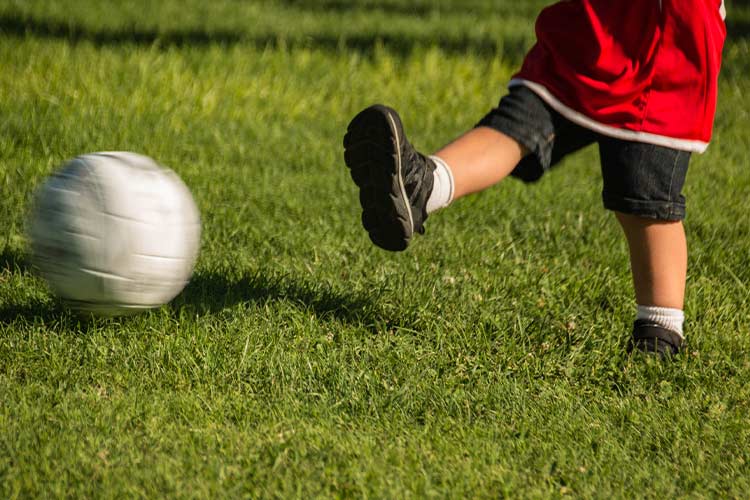Join Our eNewsletter!
Subscribe to our monthly newsletter to receive encouraging advice to help you lead a healthy lifestyle.

School Sports: Common Injuries and How To Avoid Them
Participating in school sports is generally a positive experience for children and teens. School-based sports programs can teach kids teamwork and social skills and bolster their self-esteem. Unfortunately, with any type of athletic activity, there’s always the potential for injury.
In the U.S., approximately 30 million kids and teens participate in school sports, and more than 3.5 million kids aged 14 and younger get hurt every year while participating. Most of these injuries occur during sports practice.

Common Sports Injuries
The injuries that kids and teens sustain during sports are often different than those sustained by adult athletes because younger athletes are still growing, and their muscles and bones are still forming. School sports injuries typically fall under one of two categories: acute or overuse.
Acute injuries are those that are caused by sudden trauma, such as:
- Sprains and strains
- Bone fractures
- Concussions
- ACL (anterior cruciate ligament) tears
Acute injuries most often happen during competitive team sports and contact sports, such as football, basketball, and soccer.

Overuse injuries happen over time when a part of the body repeats the same movement over and over again. Examples of this type of injury in younger athletes include:
- Jumper's knee - tenderness below the knee or in the upper shin
- Little Leaguer's elbow or shoulder - pain in the elbow or shoulder
- Shin splints - pain and tenderness over the shin area
- Spondylolisthesis/spondylosis - back pain caused by excessive extension of the lower back
Overuse injuries most often happen during activities that involve repetitive movements, such as baseball, track and field, tennis, swimming, cheerleading, and gymnastics.
Preventing Sports Injuries
While there's no way to completely prevent sports injuries, there are measures parents and kids can take to make injuries less likely.

- Be prepared. Your child's highest risk of sustaining an athletic injury is when they start a new sport. To lessen this risk, make sure your child is in good enough condition physically to participate in the sport they've chosen. Most schools require students to have a sports exam or annual physical before they participate in school sports. Even if your school doesn't require this, it's a good idea for your child to get a physical to ensure they're fit to participate.
- Start slowly. If your child is new to regular physical activity or if they're starting a new sport, they should start slowly, gradually increasing the duration, intensity, and frequency of the activity for proper conditioning. Encourage them to not push themselves to be a star athlete right out of the gate. It takes a lot of time and practice to excel at a sport.
- Don't rush. Muscles that aren't properly prepared tend to be injured more easily. Your child should warm up for about 10 - 20 minutes before any activity. You should encourage light cardiovascular activities, such as jogging or jumping jacks, and dynamic stretching, such as lunges or large arm circles.
- Know the rules and techniques. This is especially important for younger kids who are new to playing sports and may not yet understand that proper technique is crucial to preventing injury. When they're at home, review the rules and techniques they learned while at practice and teach them good sportsmanship to ensure that everyone has a fun and safe experience.
- Get in gear. Having the right equipment for a sport, from shoes to protective gear, is key to avoiding injury. If financially possible, it's best to not scrimp on safety equipment because it may break during play and lead to injury. Your child should also know how to properly wear and use the equipment.
- Rest up. Injuries are more likely to happen when your athlete is tired, so make sure they're getting an appropriate amount of sleep. Also, teach them to know their body's limits and to rest between practices and games so their body can recover.
- Stay hydrated. Make sure your child has easy access to water and/or sports drinks with electrolytes during sports practice and games. Endurance, strength, agility, and reaction time begin decreasing with as little as 2% dehydration, so staying hydrated reduces your child's risk of injury.
- Take breaks. Eating six small meals a day that are high in protein, fiber, and healthy fats can help keep your blood sugar steady and may help prevent migraine attacks. Drink plenty of water. If caffeine seems to help relieve your migraine (for some people, it's a trigger), be sure to drink a glass of water for every caffeinated beverage you drink. So, if you drink two cups of coffee a day, be sure to also add two cups of water during the day.
If your child experiences an injury while participating in school sports, make sure they're following all of the care instructions provided by their coach or trainer and that they don't return to play until their injury is completely healed. Returning too soon could result in further injury and delayed healing. If a fracture or concussion is suspected, or if your child's pain persists, see a doctor as soon as possible to get proper care and to rule out a more serious issue.








